Augmented and Virtual Reality basics and terminology for the general consumer.
If you’re like me, you fancy straightforward explanations when it comes to purchases or new concepts. In the world of Virtual (VR) and Augmented Reality (AR), this can be difficult to accomplish. Most publications use vernacular that resembles a foreign language – “HTC Vive is an HMD that offers a tethered room-scale immersive experience”…huh, what?
Contents:
The industry is relatively raw and still rapidly advancing, VR/AR social media is stuffed with enthusiasts and tech geeks. As the industry treks toward the ordinary consumer, casual gamers, parents, and non-geeks will be engaged in the VR/AR phenom. Most will find themselves wondering what all the brouhaha is about. Whether it’s to make a purchase or curiosity, chances are you’ll wonder what these crazies are chattering about. Thankfully, you have me to take you through the basics of the VR/AR world.
First, I’d like to address why I, as well as others covering this industry, tend to lump VR and AR together. Technically they’re different concepts that require different software and hardware. The force that often brings them together is the spirit of the technology. Both industries aren’t fully defined, but their frameworks are in place, and the concepts are similar. In my opinion, AR and VR are both a means to very similar ends – ones ability to control and manipulate their environment. In that light, constructs such as 360 video, AR applications, and VR gaming are all small pieces of the larger trend in this technology, and it’s all about communication and entertainment – but I digress.
Moving on…
What is Virtual Reality (VR)?
Google’s definition:
the computer-generated simulation of a three-dimensional image or environment that can be interacted with in a seemingly real or physical way by a person using special electronic equipment, such as a helmet with a screen inside or gloves fitted with sensors.
My explanation:
Users immerse themselves in a fantasy or a real world location, typically they take the form of digital renderings or pre-recorded 360 videos, respectively. Some would argue that 360 video isn’t VR, but as I explained before all of these concepts are a part of a broader trend in tech. Besides, most users will associate 360 video and 3d digital environments with VR. We’ll leave the differences to the tech nerds.
It’s important to understand that users aren’t physically immersed, just visually. VR isn’t teleportation; however, the best experiences deceive one’s senses into believing they’re somewhere else. Which could cause physical responses, think motion sickness and other forms of stimulation. A few startups are working on gloves, suits, and helmets that excite other senses, but today’s VR platforms are principally sight and sound. Finally, these adventures are experienced through a head-mounted display (HMD) requiring a smartphone, a PC, or a gaming console.
What is Augmented Reality (AR)?
Google’s definition:
a technology that superimposes a computer-generated image on a user’s view of the real world, thus providing a composite view.
My explanation:
You won’t be transported (virtually) to a different time and place, and your senses continue to function relative to your surroundings, but your surroundings become interactive. For example, if you look out your window, in theory, you’ll see the temperature and other weather-related data. Currently, this technology requires some sort of headset, but contact lenses and other less obtrusive designs are rumored to be in development. The current generation’s hardware are more like sunglasses and are transparent or semi-transparent.
AR is trending toward co-mingling with VR. This concept is being dubbed “Mixed Reality.” Microsoft’s HoloLens will eventually support this idea via Holoportation. Check out this amazing video that demonstrates what video chat could become in the near future:
AR consumer products are lagging behind VR and are likely out of reach for the general consumer, luckily you can still get a taste of AR via smartphone apps or software like ENTiTi. In fact, Google has had a rudimentary form of AR for a while now in their Google Goggles app. Very basic, but it’s AR in a primitive form.
How does one utilize this amazing technology?
There’re two major form factors in modern VR: Smartphone viewers, and PC/Console Headsets. Both occupy the user’s full field of view or close to it. With AR devices, the trend is untethered transparent or semi-transparent glasses. AR requires this transparency to augment a human’s reality, and tethering would limit what reality it could augment. As such, the bar is set pretty high, and hardware developers have significant challenges to overcome. Whereas with VR, tethering is acceptable for the time being as an alternate reality is served to the user. Movement isn’t as critical in VR as it is in AR, yet.
Here’s a list of the major from factors and the principal players in each category.
VR Headsets:
Smartphone Viewer: This untethered product-line is the most affordable and will likely end up in your hands at some point. They range from $100 to Free. Check out my post on the best budget VR headsets.
- Samsung Gear VR (Powered by Oculus): Requires a recent generation Samsung smartphone. At $99.99 you’ll get the most immersive experience outside of a tethered PC/console headset.
- Google Cardboard: In 2014 Google released specs for a cardboard based smartphone viewer which are manufactured by third parties and sell for under $30. Cardboard is more inclusive and supports most new smartphones, including the iPhone.
Tethered PC Headset: These HMDs require a PC with a decent graphics card. Check out the top VR GPUs (graphics cards) here. They aren’t very affordable with the headsets starting at $599, and that’s not including the PC. These products offer the best VR currently has to offer. All-in-all you’ll be about $1800+ in for these premium products.
- Oculus Rift: Starting at $599.99, it’s the least expensive of the two PC HMDs. Although Oculus claims that the Rift can support full room-scale VR just fine, out of the box it’s limited (room-scale is the ability to walk around a real room and your movements are mirrored in the virtual world).
- HTC Vive: At $799.99 you’ll get room-scale VR and the best hardware available.
Tethered Console Headset: Currently, the only player in this category is Playstation VR (PSVR). This form factor is the second most affordable since it leverages a gaming console that typically runs between $300 to $400 plus the cost of the headset. For PSVR, you’ll have to fork out $399.99 for the HMD, which will set you back about $750 for a basic PSVR setup. Pick yours up here.
AR Headsets:
Untethered AR Headsets/Devices: Most are in development, and all are untethered. AR is in its early stages. The tech is promising, but the cost it through the roof. Google Glasses are still being sold on Amazon.com by 3rd part sellers for $1k+, and Microsoft’s HoloLens is up for sale to developers for $3k.
- Microsoft HoloLens: If you have $3k burning a hole in your pocket you can join the HoloLens Community and wait for an invite to purchase the development version that’s already shipping.
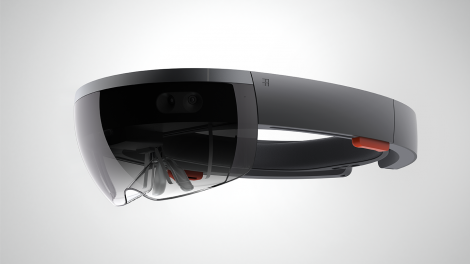
- Google Glass: This product isn’t available to the public. Google recently ended it’s public beta, but still claims to be committed to its development. This isn’t a surprise, although it’s a neat little gadget it’s closer to a smartwatch than an AR device. It didn’t quite hit the mark.
- Samsung Gear Blink (or Smart Contact Lense): This past week Samsung filed a patent for a smart contact lens, almost certainly for an Augmented Reality contact lens. This is a good indicator where AR technology is trending, and possibly VR.

Why would someone want VR/AR?
The gaming industry has been the principal motivator moving this tech forward, but there are plenty of other industries that stand to gain from a broader reaching and a more affordable VR/AR market. Chances are you’re not a gamer, but you’re reading this. In that regard, I’m sure you can answer this question, to some extent, on your own. Nevertheless, here are some non-gaming examples:
Medical: Surgical procedures are being live streamed in 360 VR video, med students study the body from the inside out and practice surgical procedures in VR, and augmented reality helps diagnose patients. I’m not talking about the future; this is right now. Imagine what’s next.
Will you be watching? Cancer surgery to be live streamed on 14 April #meded #medtech https://t.co/p5pbDYR7NX
— RACSurgeons (@RACSurgeons) April 7, 2016
How UCLA surgeons are using Virtual Reality to rehearse intricate medical procedures https://t.co/2jIUup1uNU #VR pic.twitter.com/d00j3GpZwJ
— Ben Smith (@benasmith) April 5, 2016
Why #VirtualReality Could Be A Game Changer For The Disabled – ARC https://t.co/kHlBcXTZsd #VRmed
— VRonEdge (@VRonEdge) March 21, 2016
Education: From teaching aids to field trips, VR and AR might already be supplementing your child’s education. Currently, the low cost of Google Cardboard provides a compelling and budget friendly way to enhance education for nearly any institution. Learning in an immersive environment is extremely beneficial, and will help close knowledge gaps – especially for children with disabilities and low-income neighborhoods.
Automotive: Augmented windshields to VR test drives. Customers can browse cars from their home and take a car for a spin, and when it breaks down, they can open the hood and have the car tell them what’s wrong.
Sports: Sit in your seat before you purchase them, simulate real game play without (much) risk of injury, and watch your favorite sporting event as if you were on the field with the players.
Retail: Build your dream kitchen while in your current kitchen and see a product as if it were right in front of you to test it with your decor. Try on a dress or discern if that color lipstick matches your eyes. I can go on and on.
Tourism: Test out your room before you book, explore Africa and Europe before you decide where to visit, and travel in time. Some say VR will hurt the tourism industry, but insiders theorize the opposite – they believe that prospective travelers will be more compelled to visit if they have a taste of the real thing in VR.
What next?
Now that you have a general idea of what VR and AR are, you might find yourself wanting to know more. I’ve compiled a list of websites that offer more advanced explanations, and I’ve listed some key terms you ought to read over. I hope you found this to be informative. Post your questions in the comments and I’ll do my best to explain or point you in the right direction.
Terminology:
- Goggles: interchanged with a headset. A device is worn on the head that covers your eyes with a screen and sometimes an audio system.
- HMD: Head Mounted Display or Head Mounted Device. Another term for a headset.
- Seated: A seated experience is where a user sits or stands in one place while using VR.
- Room scale: A room scale experience is where the user moves around in both the VR world and the real world. As the user takes steps, they move in the virtual world.
- Head tracking: The VR world moves relative to your head on an X, Y, and Z axis – so forward, backward, and side to side. Essentially, this function replicates your head movements in VR.
- Field of View: How wide picture of the VR world is. Most VR headsets do not have a 360-degree display; that would be expensive and unnecessary. All that is needed is 100 to 110-degree displays. Head tracking allows for the 360 experience.
- 360 Video: Video that captures 360 degrees of video. Typically this requires multiple cameras and software to stitch the individual views into one spherical rendering. VR headsets using head tracking can then explore the stitched video. Some 360 videos can be examined in a web browser or smartphone by clicking and dragging or moving a phone.
- Tethered: A tethered headset will have wires attached to a computing device. Tethered headsets make it difficult to move around, and you’ll have to be near to your computer to utilize the headset.
- GPU: Graphics Processing Unit, or Graphics card. Sometimes referred to as video card. This renders the VR 3d gameplay/video. In fact, this is the technology that has improved the most enabling consumer VR.
Further reading:
How Does VR Works: Wareable.com
The Inside Story of Oculus Rift and How Virtual Reality Became Reality: Wired.com
WHAT IS AUGMENTED REALITY (AR): Digitaltrends.com
Best Budget VR Headsets: VRonEdge.com
Top Selling VR GPUs: VRonEdge.com

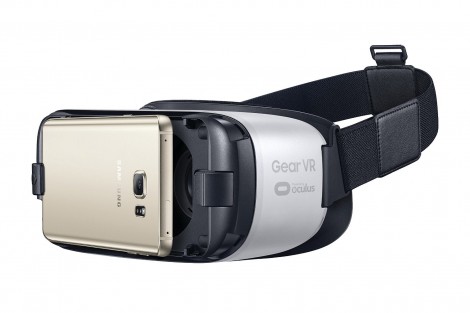
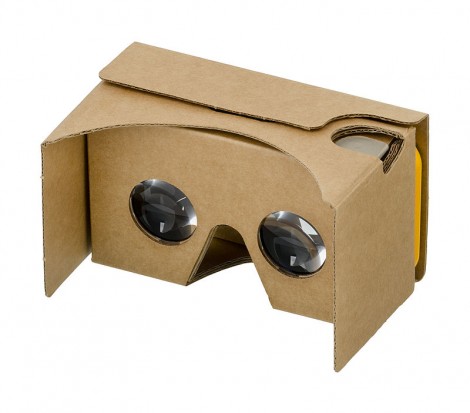
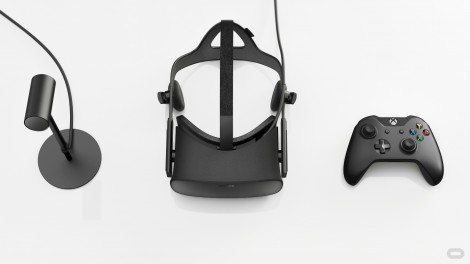
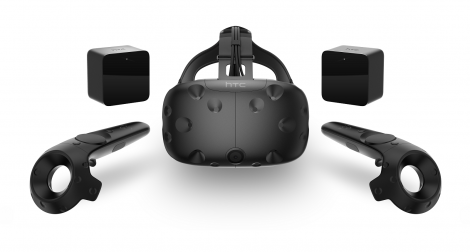
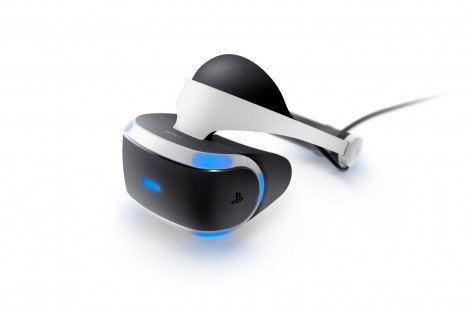
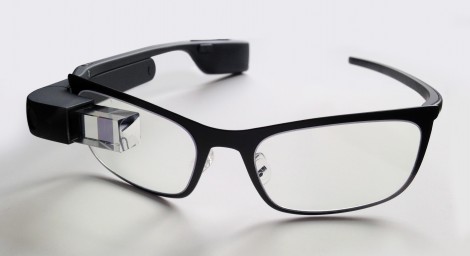
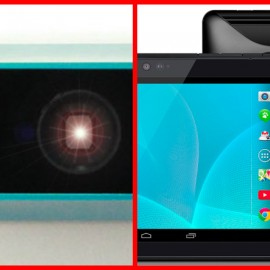

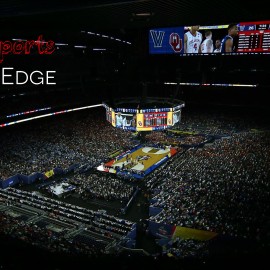
Pingback:VR’s Big 3: PlayStation VR, HTC Vive, and Oculus Rift | Spec Comparison | VRonEdge
Pingback:Father's Day Gifts: The Virtual Reality Edition - 2016 | VRonEdge
That Samsung contact lens would be awesome. I need more new about that.
I agree. If you want to read up more on the lens check out SamMobile (link below), they broke the story and have more details.
http://www.sammobile.com/2016/04/05/samsung-is-working-on-smart-contact-lenses-patent-filing-reveals/
Wow, this is a fantastic resource. Thanks for sharing this with the world. You rock man!
Thanks for reading! This tech is very exciting.
I made a Google Cardboard VR a couple of months ago and that was my first time trying VR. It was absolutely awesome. Now, I’m planning to buy the Samsung Gear VR, thanks for including it in your list and stating its price.